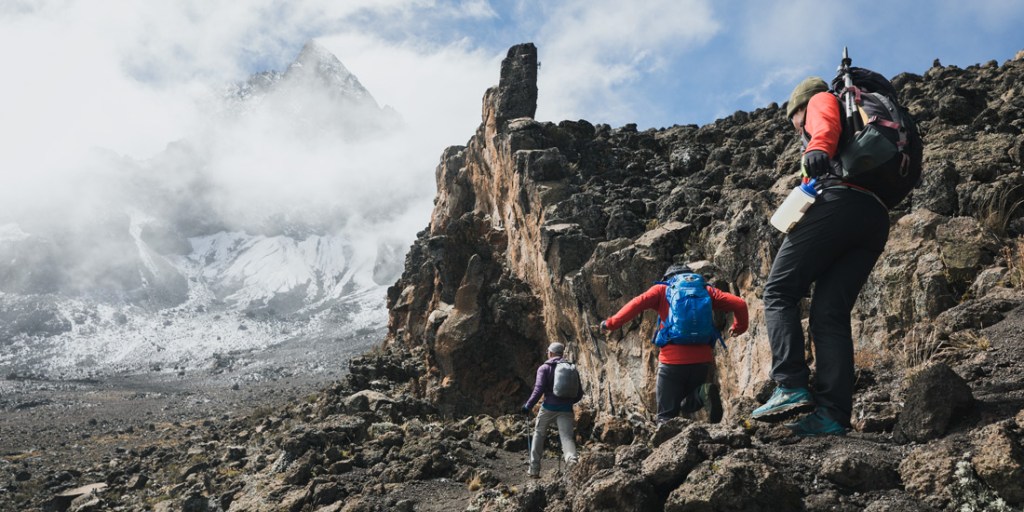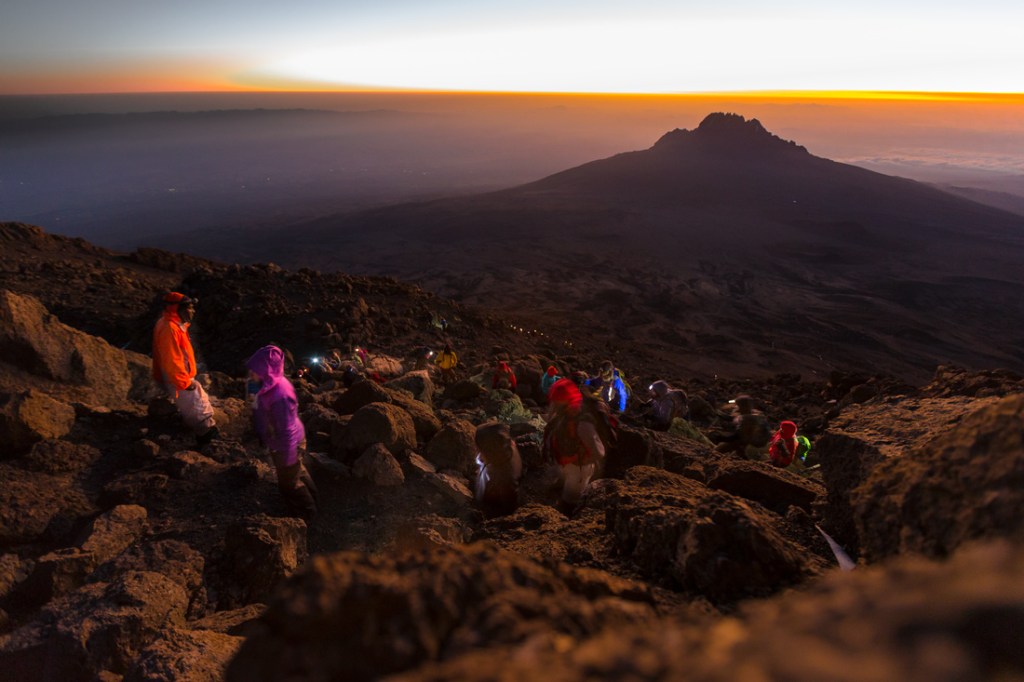There’s no way around it—hiking Kilimanjaro is tough. Sure, it’s a non-technical summit, meaning you don’t need any technical mountaineering experience or special equipment to top out, and you’ll have porters to carry some of your gear and a guide to lead the way (more on this later), but you’ll need to be prepared for three to eight hours of hiking a day for five to 11 days straight. That is, except for summit day, when you’ll likely be on your feet for more than 16 hours.
Still, thousands of climbers attempt the 19,340-foot peak each year for good reason. One of the Seven Summits, the tallest mountains on each continent, Kilimanjaro has been on adventurers’ bucket lists since the first-recorded successful summit in 1889, and its location near the equator makes it possible to hike nearly year-round. So if you’re planning to join those ranks, you’ll need to do some planning to ensure you’re at your best. Here’s what you need to know to get started.
Fitness
 Getting in Shape
Getting in Shape
It’s imperative to be physically fit. To condition your body for the trek, spend at least a few months leading up to your adventure doing cardio training like walking, hill running and biking long distances on high resistance. For more specifics, our thru-hiking training guide is a great place to start, or pick up a copy of Polepole, a detailed guide to getting in shape for Kilimanjaro and other famous, long-distance treks.
Altitude Acclimation
Ask your doctor about any medications that may assist with your climb, increase ease of altitude acclimatization on the mountain and fend off unwanted symptoms like nausea and headaches. Most tours build in extra days to acclimatize, but if you’re new to altitude, selecting a longer climb will increase your chances of successfully adjusting to the thin air.
Worried about altitude sickness? Check out our guide on altitude acclimation.
When to Visit
Kilimanjaro’s temperate, equatorial climate means you can book your climb pretty much whenever works best for you. But there are a few rainy seasons to avoid, mainly from March to May and November to December. Even then, trail conditions tend to be slippery but doable.
Getting There
 Most climbs begin in Tanzanian base towns like Moshi, Marangu and Arusha. Travelers typically arrive by way of Arusha, which is accessible by air from regional hubs like Nairobi, Kenya, and Dar es Salaam, Tanzania. Car transfers can be arranged in advance from Arusha to Moshi and Marangu.
Most climbs begin in Tanzanian base towns like Moshi, Marangu and Arusha. Travelers typically arrive by way of Arusha, which is accessible by air from regional hubs like Nairobi, Kenya, and Dar es Salaam, Tanzania. Car transfers can be arranged in advance from Arusha to Moshi and Marangu.
Packing
The mountain’s distinct ecological zones harbor variable weather conditions, from tropical showers to piercing winds, making proper layering essential. Your guide will likely brief you on all the clothing items you’ll need to bring, and you can find a complete, printable packing list here. But there are some high-level considerations to keep in mind as you start planning.
First, Tanzanian law dictates that your porter is only allowed to carry up to 32-pounds of gear for you. So pack accordingly, and plan to store extra clothes, gear and hardshell luggage at your base hotel.
Your porter will haul your overnight bag to each campsite, so be sure to pack essentials like medication, layers, sunscreen, food, water, money, passport and camera in your day bag. The weather can change quickly, meaning a waterproof pack or a raincover is essential. We suggest a medium-sized daypack (approximately 25–35 liters) with built-in hydration technology for easy access.
Your overnight bag should be around 95-liters. Look for one made with durable waterproof material that can fit a luggage lock. It’s also a good idea to stuff your gear and clothes in a trash bag or two before packing them in your duffel to ensure everything stays dry.
Picking the Right Guiding Service
You can’t hike Kilimanjaro without a guide, but besides being illegal not to, there are plenty of other good reasons to go guided. They know the route and the weather, are experienced in altitude acclimatization, will arrange your porters and might even cater your meals. Group travel is the easiest and most affordable option, but you can book a private trip. Though quick ascents are offered for experienced climbers, longer trips with built-in acclimatization days are best for novice to intermediate climbers. For shorter routes, expect to pay around $2,000 USD for a full package, while longer climbs can cost up to $6,000 USD.
Picking the Right Route
 While there are plenty of technical ascents, there are three main routes to the summit. Not sure what route is the right one for you? We’ve compiled the pros and cons of each popular route up Kilimanjaro.
While there are plenty of technical ascents, there are three main routes to the summit. Not sure what route is the right one for you? We’ve compiled the pros and cons of each popular route up Kilimanjaro.
Marangu Route
Miles: 48.2 round trip
Elevation Gain: 13,340 feet
Total Trip Length: five to 10 days
Quick and comfortable, Marangu is the shortest route to the summit and the only one with accommodations along the way—A-frame huts with gorgeous views of Kilimanjaro National Park.
Rongai Route
Miles: 45 round trip
Elevation Gain: 12,940 feet
Total Trip Length: five to 10 days
If you are looking for a less-traveled hike, head to Rongai, the only route up the north side of the mountain, which winds through forest, moorlands, alpine desert and beautiful arctic zones.
Lemosho Route
Miles: 47.5 round trip
Elevation Gain: 12,340 feet
Total Trip Length: seven to 11 days
One of the newest, longest and most beautiful routes on Kilimanjaro, Lemosho passes through six distinct ecological zones and is great for those looking for more time to acclimatize.
